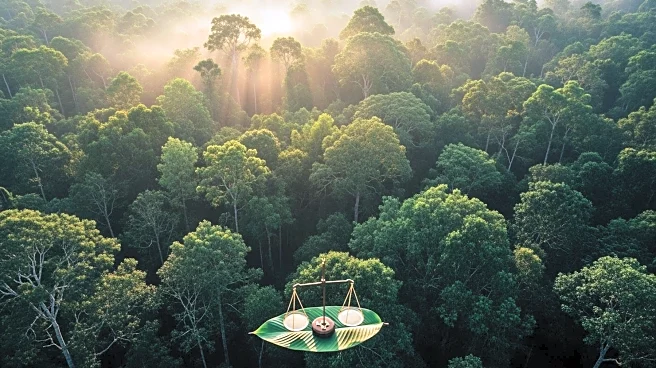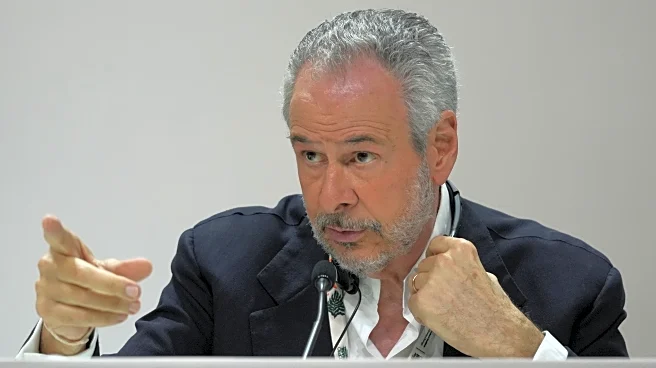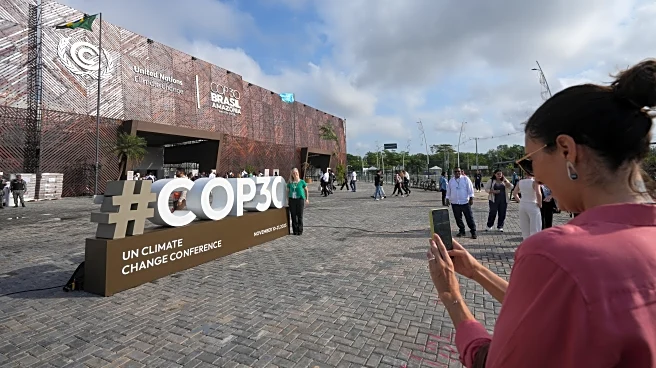What's Happening?
During the COP30 climate summit, Brazil has announced the creation of 10 new Indigenous territories, a move aimed at protecting the culture and environment of these areas under Brazilian law. This decision
follows similar actions by President Luiz Inácio Lula da Silva, who recognized Indigenous possession of 11 territories last year. The new territories include parts of the Amazon and are intended to safeguard biodiversity and combat global warming. The announcement comes amid protests at COP30, where Indigenous groups have been advocating for legal recognition and protection of their lands. The designation of these territories is seen as a positive step towards preserving Indigenous cultures and addressing environmental challenges.
Why It's Important?
The creation of new Indigenous territories in Brazil is significant for several reasons. It highlights the country's commitment to protecting Indigenous rights and preserving biodiversity, which is crucial for combating climate change. Indigenous lands play a vital role in maintaining global biodiversity, and their protection can contribute to reducing carbon emissions and preventing deforestation. The move also reflects Brazil's efforts to address environmental concerns and support Indigenous communities, which have historically faced challenges in defending their lands. The decision may influence international climate policies and encourage other countries to prioritize Indigenous rights and environmental protection.
What's Next?
The formalization of the new Indigenous territories through a presidential decree will be a critical next step. Indigenous groups and environmental organizations will likely continue to advocate for further legal recognition and protection of their lands. The Brazilian government may face pressure to enforce the protections effectively and address ongoing threats to Indigenous territories, such as illegal mining and deforestation. The international community will monitor Brazil's actions and their impact on global climate goals, particularly in relation to the Amazon rainforest's role in regulating the climate.












